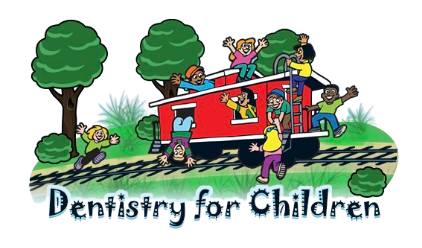
Our Dental Services
Comforting Dental Care for the Whole Family
At Dentistry for Children, we’re committed to making your experience as smooth and stress-free as possible—from your child’s first visit to every checkup after. Our Patient Resources section is here to help you stay informed and prepared with everything you need in one place. Easily access and complete new patient forms online before your appointment, log in to our secure PatientConnect portal to view treatment history, request appointments, and make payments, and get answers to frequently asked questions about our services, insurance, sedation options, and more.
We also offer flexible payment solutions and accept most major insurance plans. If you ever need help along the way, our friendly team is just a call away.
Compassionate, Dedicated Pediatric Dental Care For Over 45 Years!
Infant Dental Exams
Early visits help us monitor your baby’s oral development and set the foundation for a healthy smile.
Space Maintenance
If a baby tooth is lost early, space maintainers help keep the area open to guide proper tooth placement.
Lip Tongue Tie
We evaluate and treat lip and tongue ties that may impact nursing, speech, or oral development.
Curodont
Curodont is a non-invasive treatment that helps reverse early tooth decay without drilling, using advanced remineralization technology.
Special Needs
Our team provides personalized dental care tailored to children with sensory, developmental, or medical needs in a supportive environment.
Preventative Sealants
Thin, protective coatings applied to back teeth to help prevent cavities in hard-to-reach grooves.
Schedule an Appointment Today
(334) 277-6830
Helpful Tips
Smart Snacking
There are many important factors to consider when choosing a snack. It is not only what you eat as a snack, but how often you snack. Here are some important facts about how snacking affects your teeth and things to consider when choosing a snack.
-
Plaque bacteria are naturally present in everyone’s mouth. When we eat sugary or starchy snacks—like juice, soda, candy, cookies, chips, or pretzels—those sugars interact with the plaque and produce acid. This acid attacks the tooth enamel, leading to what we call a “plaque attack,” which can increase the risk of cavities over time.
-
Each time your child eats a sugary snack, it triggers an acid attack on their teeth that can last up to 20 minutes. These repeated “plaque attacks” gradually weaken the enamel, making it easier for cavities to form. That’s why it’s healthier to enjoy snacks in one sitting rather than grazing throughout the day—less frequent snacking means fewer opportunities for acid to damage their teeth.
-
What your child eats—and how often—can make a big difference in their dental health. Opting for nutritious, low-sugar snacks helps protect their teeth from plaque and decay. Here are some smart choices to support healthy smiles:
Better Snack Choices:
Cheerios
Whole grain Goldfish
Plain crackers
Pretzels
Popcorn
Fresh fruits
Canned fruit in natural juice
Cheese cubes
Fresh vegetables
Yogurt
Milk
Water
Snacks to Limit or Avoid:
Fruit roll-ups and gummy snacks
Candy-coated fruit
Cookies and candy
Canned fruit in heavy syrup
Popsicles
Soda
Juice boxes (like Capri Sun)
Kool-Aid
Sports drinks (Gatorade, Powerade)
Flavored milk
By limiting how often your child snacks and choosing healthier options, you can help reduce the risk of cavities. Don’t forget—brushing twice a day is key to keeping plaque in check!
Note: If your child follows a special medical diet, always consult with their physician or dietitian before making changes.
Dental Emergencies
Have a dental emergency? Please check out this handy guide and then give us a call!
-
Rinse the mouth with warm water to clean it out. Use dental floss to remove any food that might be trapped between the teeth, See your dentist as soon as possible.
-
If the tooth is dirty, rinse it gently in cold running water. Do not scrub it or remove any attached tissue fragments. Gently insert and hold the tooth in its socket, if this is not possible place the tooth in a cup of milk. Go immediately to your dentist (within 30 minutes, if possible) Don’t forget to bring the tooth! DO NOT INSERT A BABY TOOTH BACK IN THE MOUTH.
-
Gently clean dirt from the injured area with warm water. Place cold compress on the face, in the area of the tooth, to decrease swelling. Call your dentist immediately.
-
Apply direct pressure to the bleeding area with a clean cloth. If swelling is present, apply cold compress. If bleeding does not stop, go to a hospital emergency room.
-
Try to remove the object with floss. Guide the floss carefully to avoid cutting the gums. If you’re not successful in removing the object, go to the dentist.
-
Do not move the jaw. Secure the jaw in place by tying a handkerchief, necktie, or towel around the jaw and over the top of the head. If swelling is present, apply cold compress. Go immediately to the hospital emergency room.

